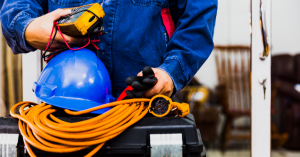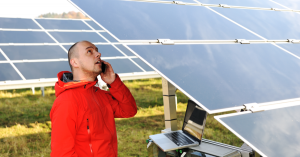Estimated reading time: 4 minutes
Throughout the past several months, there has been a major push for mobility, within all realms of the workplace. Calls for employee and customer interactions are increasingly important, no matter what medium they take place in, out in the field or through within a digital environment. It shows a lot about how an organization can continue to evolve through altering situations with how its technology devices evolve as well. For those who mostly flourish out in the field, have an increased risk involved, for they are actually meeting face to face with customers and vendors, which has been deemed a big worry during a pandemic. Protecting personnel from the deadly spread of the virus involves eliminating a few commonly taken steps, processes, and steps to ensure safety and unwavering productivity all the while.
Considering Employees
For field service workers, the outside-world is their office, so there is no ‘work-from-home’ change-up for these individuals. Field service workers tend to repairs, maintenance, installations and deliveries on-site, either alone or a part of a crew. COVID-19 can’t stop these workers from doing their jobs. Just imagine a construction site not receiving vital equipment pieces;  it’s almost unheard of. That’s where the power of technology comes in to save the day. Several companies have pivoted away from utilizing physical employees and rather scheduling deliveries on an as-needed basis, eliminating the need for human involvement. Digitization, mobile enablement, and intelligent automation help organization relieve their worker base, saving them from opportunities to be infected while also gaining heightened operational efficiencies and maintaining a positive sense of customer satisfaction as well.
it’s almost unheard of. That’s where the power of technology comes in to save the day. Several companies have pivoted away from utilizing physical employees and rather scheduling deliveries on an as-needed basis, eliminating the need for human involvement. Digitization, mobile enablement, and intelligent automation help organization relieve their worker base, saving them from opportunities to be infected while also gaining heightened operational efficiencies and maintaining a positive sense of customer satisfaction as well.
Injuries are far from uncommon in this line of work, and with that being said it’s fair to say that each day on a job can be physically trying and demanding, unlike a typical desk job. To ensure employees are staying safe on the job, outside of the virus, it’s up to managers and other administrative to be the crutch if a field service worker falls, both metaphorically and literally. That’s where assistive technologies come into the picture as well. Augmented reality (AR) tools can be introduced to walk customers through where to plug in a specific cable, or possible which switches to flip in a breaker box to diagnose a problem. Such assistive tech helps to slow the truck rolls, cutting back on in-person contact, and saving companies a significant amount on operational fees.
At the same time, there are various other smart strategies that can help to maximize on Field Service Productivity on a day-to-day basis. Technicians can snap photos of work-sites and then allow AI-supported analytics to these installations and routine maintenance checks have been completed properly, sending such notifications to both the customer and their superior to cover tracks, accordingly.
Computer Vision allows workers to acquire an accurate read of inventory numbers, so no worker will ever clock in for a day’s worth of work unprepared and uninformed. Additionally, security cameras can be mounted to track the status of equipment articles to get out of any future malfunctions.  IoT sensors and thermal imaging cameras can also monitor such things, especially if cold/hot temperatures are involved, saying that refrigerated containers must be recording a designated temperature and if that were to change at any moment, an alert would be sounded to all participating workers. Smart technology bytes play a large role in assisting field service workers, especially during a global pandemic.
IoT sensors and thermal imaging cameras can also monitor such things, especially if cold/hot temperatures are involved, saying that refrigerated containers must be recording a designated temperature and if that were to change at any moment, an alert would be sounded to all participating workers. Smart technology bytes play a large role in assisting field service workers, especially during a global pandemic.
Digital enablement opens up the floor for greater efficiency rates, in the meantime. Apps can be utilized to easily leverage the phone’s camera to share a video captured, suited to specific needs. AI strategies such as computer vision can automatically pull asset attributes and design specs straight from the imagery to better depict and track what is needed. Introducing this physical distancing helps to cut back on the typical amount of exposure that one experiences throughout a normal pre-COVID-19 work day.
Considering Devices
For the sake of COVID-19, and the way it is affecting how employees in these fields handle and operate their jobs, managers can benefit a lot from adopting remote device management. If a device is exhibiting issues while out on the road and the worker has no way of fixing it, the manager would be able to lend a helping hand, through the wavelengths to ensure that the issue was resolved. At the same time, when it comes to enforcing gatekeeping capabilities, managers should hold the power to deploy geo-fences to block out non-critical applications, in hopes of preventing any disruptions or distractions for the field service workers.  This helps to remote any cyber-risk that could be out there, throughout the duration of the shift/job. When it comes to monitoring employees, many devices possess a GPS function, so that way everyone involved in the job can know where each worker is, enable a quick re-schedule if necessary, and point out any traffic delays that pop up unannounced.
This helps to remote any cyber-risk that could be out there, throughout the duration of the shift/job. When it comes to monitoring employees, many devices possess a GPS function, so that way everyone involved in the job can know where each worker is, enable a quick re-schedule if necessary, and point out any traffic delays that pop up unannounced.
Digitization, mobile enablement, and intelligent automation offer brand new opportunities for sustainable operation, while also practicing safe and healthy workplace patterns. The pandemic has been known to provide everyone with a sense of uncertainty, for there is no telling as to when we will regain 100% normalcy. Smarter more cost-effective methods for working, such as digital enablement and automation can provide answers to short-term dilemmas and keep field services industries positioned for a line of success for some time to come.

